Northwestern Medicine Catherine Gratz Griffin Lake Forest Hospital Legacy
From its beginning in 1899 as the Alice Home Hospital on the campus of Lake Forest College, and continuing since 1942 in its present location on the grounds of the former Dick family farm, Northwestern Medicine Lake Forest Hospital has grown into a 114-bed not-for-profit community hospital offering a continuum of healthcare services that is unmatched in the region.
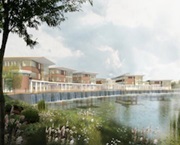 |
2018 The new state-of-the-art Lake Forest Hospital opened on 3/3/18.This newly redesigned campus integrates health, wellness |
|
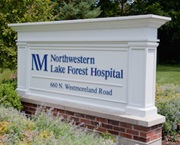 |
2010 An integration with Northwestern Memorial HealthCare brings expanded care options to Lake Forest Hospital patients. |
|
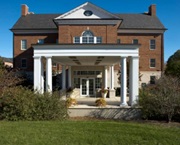 |
2004 The Hunter Family Center for Women’s Health opens, offering a premier maternity experience and women’s imaging services. |
|
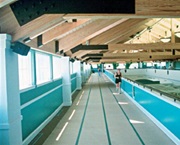 |
1994
Lake Forest Hospital opens the Health & Fitness Center to provide rehabilitation, fitness and wellness programs. |
|
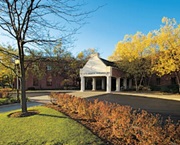 |
1992 A second facility for physician practices, the Bays Medical Building, opens. |
|
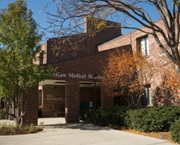 |
1981 Physician practices and hospital outpatient services arrive on campus with the completion of the 38,000-square-foot McGaw Medical Building. |
|
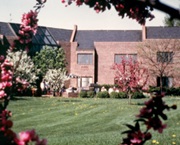 |
1975 The Westmoreland Nursing Center opens to provide 24-hour care for seniors. |
|
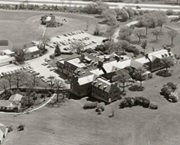 |
1966 A significant expansion of the hospital includes the addition of a three-story West Wing. |
|
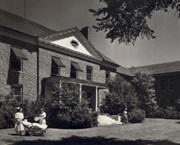 |
1959 The hospital expands from 65 beds to 101. |
|
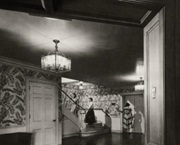 |
1942 The new hospital is built on Westmoreland Farm and modeled after the Dick family's home, shown here. |
|
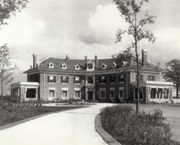 |
1942 The new hospital's lobby provides a comfortable welcoming for patients and visitors. |
|
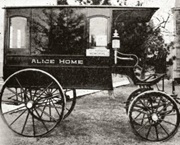 |
1899 Mrs. Grace Durand offers $5,000 to build the new hospital in honor of her sister Alice. |
|
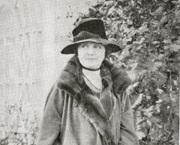 |
1899 The hospital opens as “Alice Home.” |
|
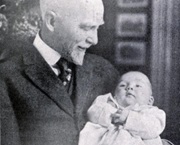 |
1882 Alfred C. Haven, MD, works as a "doctor without a hospital" until he becomes the hospital's first physician in 1899. |
1899-1940 A Foundation of Caring
Lake Forest Hospital was founded on the tradition of giving. Home to many of Chicago’s premier business leaders and influential families, the community of Lake Forest, boasted nearly 2,000 residents by the late 1890s. At that time, the nearest healthcare facility was located in Waukegan and it was a long trip by train. Dr. Alfred C. Haven, the town’s sole physician, gained support among community leaders for building a hospital in Lake Forest. Pastor G.K. McClure, president of Lake Forest University, met with Dr. Haven and Mrs. Henry Durand, wife of the president of the University’s board of trustees. Mrs. Durand agreed the healthcare needs of the community were not being met and submitted a proposal to the board along with $5,000 to be used to build a hospital named "Alice Home" in memory of her sister Alice Burdsall Burhans.
Medical science in the early 20th century faced a variety of challenges as vaccinations and antibiotics did not yet exist. Additionally, the rising population led to an increase in contagious diseases and the need grew to isolate infectious patients. A separate contagious ward was built nearby in South Park in 1908 for this purpose.
With continued growth in the community, Alice Home expanded to keep up with demand. A small addition to the hospital was built in 1912. Later, separate quarters housed the nursing staff. This building now serves as a dormitory for Lake Forest College students.
During this time, other additions to Alice Home included an operating room, a separate maternity ward and an X-ray facility, all gifts from prominent Lake Forest families. Contributions of time and money, however, were not the only ways community residents showed support.
By the late 1930s the healthcare needs of the residents of Lake Forest were outgrowing those available through Alice Home, so a number of alternatives were considered. The cost to modernize the hospital rivaled the cost of new construction; even so, the wooden structure would remain a fire hazard. Plus, Alice Home’s location made further expansion difficult. Several sites for building a new hospital were considered, but the A.B. Dick family’s offer to donate their property for this purpose simplified the search.
To increase community awareness and secure financial support for the new hospital, a testimonial-style pamphlet was distributed throughout Lake Forest. Plans for the development of the hospital building soon followed. Stanley Anderson, a prominent local architect who had designed Lake Forest High School, as well as numerous private residences, was chosen to lead the project.
1941-1968 A Time for Growth
In 1942, the new Lake Forest Hospital opened to serve the community. With 41 beds, the hospital provided most every major health care service available at the time. Wartime shortages due to World War II were gripping the country; however, the hospital continued to operate efficiently due to the continued support and generosity of community residents. Once again, the women of Lake Forest stepped in to assist nurses and staff members with day-to-day operations.
Throughout the 1950s and 1960s, community healthcare needs continued to grow as the hospital was now serving an even larger population base, reaching out to residents from nearby towns that were beginning to develop at this time. To keep pace with a growing patient base, two new wings were added at the west end of the hospital in 1967.
As medical technology advanced, Lake Forest Hospital remained on the cutting edge, acquiring the latest equipment for the diagnosis and treatment of disease. In the late 1960s, the hospital purchased its first piece of radiation therapy equipment, a cobalt treatment unit, an acquisition that was ahead of its time for a community hospital.
Moving physician offices to the hospital campus made it more convenient for doctors and their patients, but it also angered business owners who felt the lack of patient traffic downtown would deter businesses. Instead, the vacant office space allowed a variety of unique shops to open in the Market Square area of town.
1969-1999 A Tradition of Quality Healthcare
With the opening of the McGaw Medical Building in 1981, Lake Forest Hospital became the first comprehensive healthcare campus in the area and one of only a few in the state. A critical care unit/surgery wing was added in 1983 and an additional on-campus facility, the Bays Medical Building, opened in 1992 to further serve patient needs.
Another significant achievement, allowing the hospital to broaden its service offerings, included the 1986 opening of the first off-campus medical building in Vernon Hills. This facility, and others in Gurnee (1991) and Libertyville (1997), were built so patients could access quality care close to home.
In order to fulfill its mission to expand beyond the traditional focus of medical care, the Lake Forest Hospital Foundation expanded its service offerings to include Dearhaven Childcare & Learning Center in 1989. The Lake Forest Health & Fitness Institute opened on the hospital campus in 1994 to focus attention on wellness and prevention efforts, and expand rehabilitation efforts. In efforts to expand wellness and prevention efforts into Lake County, the Lindenhurst Health & Fitness Institute opened in 2000.
In 1997, the new Patient Services & Health Education Center was named in memory of A. Watson Armour III, a long-time benefactor of the hospital. The facility offers outpatient medical services, as well as a state-of-the-art health education conference center. The Armour Charitable Trust represents the largest single gift ever received by Lake Forest Hospital and will benefit Lake County residents for years to come.
With the help of funds from Among Friends benefits, Lake Forest Hospital purchased a state-of-the-art linear accelerator in 1998 to help treat patients with advanced cancer.
After the millennium, long-standing philanthropists at the hospital launched a campaign to build a new women’s hospital. This group of committed supporters raised $15 million to support the construction of a beautiful new maternity center with a special care nursery, as well as a comprehensive breast care center. The Hunter Family Center for Women’s Center and the Posy Krehbiel Breast Care Center are named for the donors whose generosity resulted in the creation of a facility offering the finest care for women in the area.
Today and Looking Towards the Future
In 2010, Northwestern Memorial finalized an affiliation with Lake Forest Hospital, which is now known as Northwestern Medicine Lake Forest Hospital. Today, Lake Forest Hospital is served by a medical staff of more than 700 employed and affiliated physicians, many of whom are also on staff at Northwestern Memorial Hospital. It continues to be recognized by U.S. News & World Report as one of the top hospitals in Illinois and Chicago and also received Magnet re-designation in 2015, the gold standard for nursing excellence and quality care. A new state-of-the-art hospital facility will open in 2017.
New Lake Forest Hospital Project
The new Lake Forest Hospital is a destination for health, wellness, and civic enjoyment.
The new state-of-the-art hospital provides our patients with access to quality care, medical experts and exceptional service as well as a seamless pathway to Northwestern Medicine specialty care.
The thoughtful design of the 160-acre campus integrates medical care with health and wellness through walking and biking trails as well as a new common area for community activity and enjoyment.
The new hospital contains:
- 114 private inpatient beds
- 72 outpatient care spaces
- 8 operating rooms
- 499,605 square feet of new construction
The redesigned 160-acre campus includes:
- 116 acres of open space
- 7,000+ feet of pedestrian and bicycle paths
Campus Redesign
The new Lake Forest Hospital continues our tradition of sustainable construction and design. Our four goals include:
REDUCED ENERGY CONSUMPTION
The campus design optimizes natural lighting and incorporates efficient heating and cooling systems, among other methods.
DECREASED WATER USE
The hospital uses low-flow plumbing fixtures and avoids using drinking water for landscape irrigation
INCREASED RECYCLING
The hospital uses building materials with recycled content and diverted construction waste from landfills during construction
ENHANCE THE HUMAN EXPERIENCE
The new facility offers a work environment that includes collaborative spaces for caregivers and staff, a reduction in ambient noise and improved control over indoor lighting in staff, patient and visitor areas.
